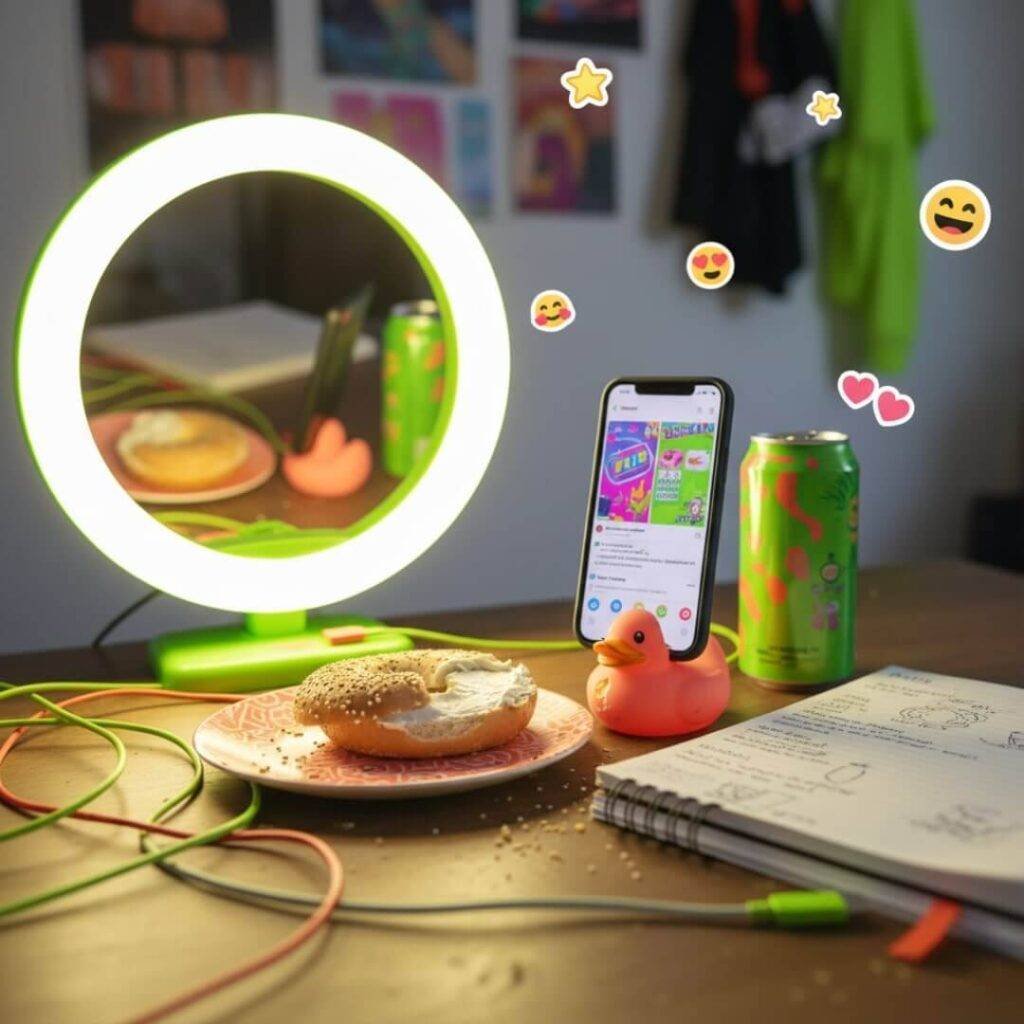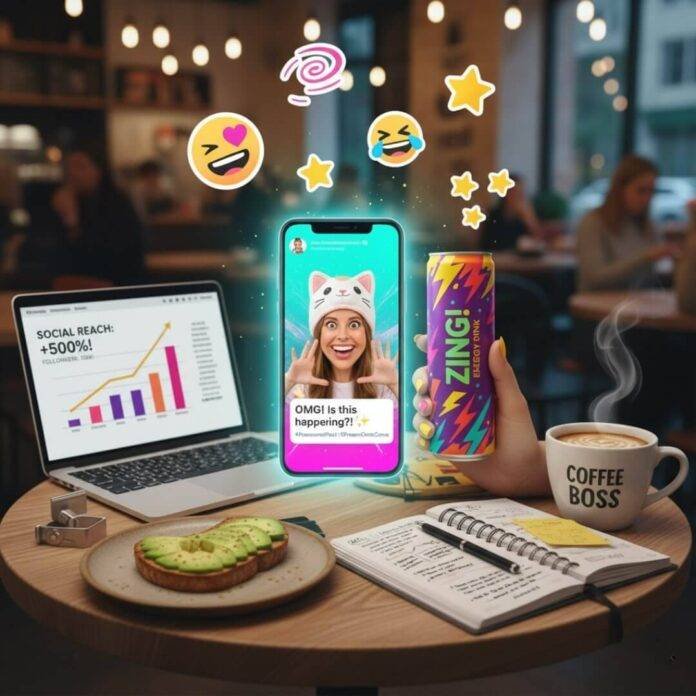Okay, micro influencers are legit taking over my brain. I’m sprawled on my lumpy couch in my tiny Brooklyn apartment, surrounded by empty seltzer cans and a laptop that’s one coffee spill away from giving up. Scrolling X, I’m, like, obsessed with these small creators—folks with maybe 10K followers, max—who are hitting different. Forget those big-time influencers with their private jets and flawless filters. Micro influencers are the real deal, and I’m here to spill why I’m hooked, plus some cringey stuff I did trying to keep up.
Why Micro Influencers Got Me Hooked
So, I’m at this overpriced coffee shop in Bushwick last weekend, sipping a latte that cost more than my groceries. I’m on X, and this local artist with, like, 12K followers posts about a small hot sauce brand. She’s filming herself pouring it on her tacos, making a total mess, laughing about getting some in her hair. I was sold. Bought the hot sauce before my latte got cold, and now it’s on my counter, judging my weak spice game. Micro influencers are so real, like your friend who’s way too into craft beer. They’re not selling a vibe—they’re just living it.
I saw on Forbes that micro influencers get, like, 60% better engagement than big accounts. Makes sense. Their followers actually give a crap, unlike those mega accounts with bot comments. I tried my own micro influencer thing last month, DMing a local bakery for a collab. Posted a reel of their muffins, got 19 likes (shoutout Mom), and realized I’m not cut out for this. But it showed me how these small creators can make waves with just a loyal squad.
My Cringey Micro Influencer Attempt
Real talk—I tried being a micro influencer, and it was a disaster. I hit up this indie skincare brand, thinking my 1,700 followers (half are probs spam accounts) made me hot stuff. Filmed a reel in my bathroom, which is basically a closet with a leaky faucet. My roommate’s cat kept meowing, I dropped the face cream, and I’m pretty sure I said “moisturizer” wrong. Posted it anyway, and the brand DM’d me saying they loved my “energy.” Huh? That’s when I got why micro influencers rule—you don’t need to be perfect, just you. Brands are eating that up.

Micro Influencers Are Easy on the Wallet
Brands aren’t always swimming in cash, you know? I was grabbing burgers with a friend who runs a small eco-friendly sock company, and she was raving about working with micro influencers. She said she hired, like, 12 of them for the price of one big influencer post. Over some soggy fries in a Manhattan diner, she showed me her sales—up 20% in a month! HubSpot says micro influencers can give 11x better ROI than regular ads. That’s wild.
What’s cool is how micro influencers get the brand. They’re not just slapping a product on their feed. I saw this one creator post about a vegan protein powder while blending a smoothie in her cramped kitchen, kid yelling in the background. Felt so legit I ordered it. Tasted like dirt, but I trusted her vibe enough to try. That’s the micro influencer magic—they’re sharing their life, not just selling stuff.
My Protein Powder Disaster
Speaking of that protein powder, I tried filming a “healthy morning” reel to vibe with the micro influencer crowd. I’m in my kitchen, half-asleep, trying to blend this stuff, and my cat knocks over the canister. Powder everywhere, cat hissing, me just staring like, “Why am I like this?” Posted the blooper anyway, and some random follower DM’d me saying it was hilarious. That’s what micro influencers do—turn screw-ups into gold. Brands love that realness, and I’m still finding powder in my cabinets.

Micro Influencers Build Trust Like Crazy
I’m sitting here, staring at my dying desk plant (RIP, I forgot to water you again), and thinking about trust. Micro influencers make you trust them because they’re not, like, unreachable celebs. They’re the barista hyping up a new coffee blend or the dog walker obsessed with eco-friendly leashes. Their followers feel like a crew, not just numbers. Social Media Today said 82% of people trust micro influencers over ads. I feel that.
Like, I bought these funky sunglasses from a micro influencer’s link last week. She had maybe 7K followers, posted about them while chilling in a park, her dog chewing the lens case. I could feel her hype through the screen. Compare that to some glossy ad with a model who’s never blinked—no thanks. Micro influencers make you feel like you’re in on something special.
My Sunglasses Snafu
So, those sunglasses? I got so excited I ordered them in the wrong color. Wanted black, got neon green. I look like a rave reject. Wore them to a bar in Williamsburg anyway, and my friends were like, “Bro, what?” I DM’d the influencer, and she legit wrote back with tips on pulling off bright shades. That’s the thing—micro influencers are real people who actually reply. I’m keeping the sunglasses. They’re kinda growing on me.
Tips for Riding the Micro Influencer Wave
If you’re a brand or some wannabe like me trying to jump into this micro influencer thing, here’s what I learned from my many, many fails:
- Find Your Thing: Micro influencers own their niche—think vegan baking or retro sneakers. I tried being a “lifestyle” influencer, and it tanked. Pick something and go hard.
- Own the Chaos: Post the spills, the bad angles, the cat photobombs. My protein powder mess got more likes than my “cute” posts. People vibe with real.
- Talk to Your People: Micro influencers are always in their followers’ DMs or commenting. I started doing this, and my engagement went up, like, 2%. Progress!
- Choose Smart Collabs: Brands, don’t chase big names. Find micro influencers who vibe with your stuff. I saw a creator hype a local candle brand so well I thought she was their BFF.

Wrapping Up My Micro Influencer Rant
Alright, I’m gonna be straight—I’m a mess at this influencer stuff. My apartment’s a wreck, my Instagram’s a mix of cat pics and blurry coffee shots, and I’m pretty sure my neighbor’s hamster has better brand deals. But that’s why I’m obsessed with micro influencers—they’re not perfect, and neither am I. They’re making brands feel human, saving marketing budgets, and turning social media into a real convo. If you’re a brand, jump in. If you’re like me, just post your weird, messy self. Maybe you’ll go viral. Or at least score a free soap.












































